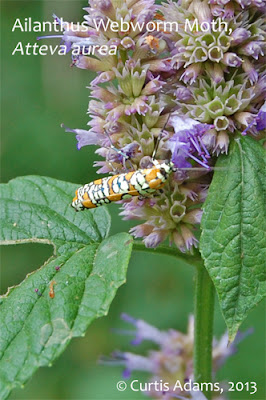 |
| An isolated collard plant looks relatively healthy. |
The other day I noticed that some of the collars looked much better than the others. These were the ones located at the end of the row and one that had been accidentally planted away from the rest. It appears that by planting these leafy greens closely together the feeding insects can go easily from one plant to the next with little exposure to predators. Access to the plants on the edges requires more work and more risk. This is a general problem when planting monocultures. While they are easier to maintain and harvest, they are susceptible to mass attacks by pathogens or predators (herbaceous) that can easily jump from plant to plant.
 |
| The Collards in the row have taken a lot of damage. The Chard (red stems) is in pretty good shape. |
Next year I will space my collards out into short rows of 3-4 plants surrounded by plants from a different family, which should have a different set of pests. This year I have a long row of Swiss Chard flanking the collards. I have been very impressed by the performance of the Swiss Chard 'Bright Lights'. They seem to have fewer pests and the plants have been providing a long season of harvest. By just picking the outer stems, a fresh crop will be generated from the center.
 |
| This Wheel Bug is just hanging out on the top of an Evening Primrose, Oenothera sp. Maybe it will grab a nearby Japanese Beetle. |
 |
| The pupae of a parasitic wasp have been feeding on this Horn Worm for a while. It is starting to shrivel up. |
Looking out the second floor window I noticed this ground beetle. I have determined what species this is, but these large (>1 inch) beetles eat other insects and their eggs. These are found primarily undercover in the leaf litter.
 |
| Don't know why this beetle is patrolling the pool cover. The Chinese Chestnut leaf is for a sense of scale |
 |
| This moth shown on an an Agastache measures about 1 inch long. |
This last insect is not a predator in the normal sense. The Ailanthus Webworm Moth, native to tropical parts of the Americas, is a useful pollinator. What I like about it is that it's larva feed heavily on the invasive Ailanthus altissima (Tree of Heaven). The natural food source for this insect are trees of the Simarouba genus. It turns out that Ailanthus is a member of the same botanical family and this is close enough for these webworms. This insect does not overwinter too far north of Florida. I never thought I would say, YEA! for a webworm.






2 comments:
Hi Curtis, This is my first year growing Swiss chard, as well. I love it for all the reasons you stated. My tomatoes are taking forever to ripen, though. I have tons and tons of green ones, but only 4 ripe tomatoes so far.
My large tomatoes just kicked in high gear last week.
Post a Comment